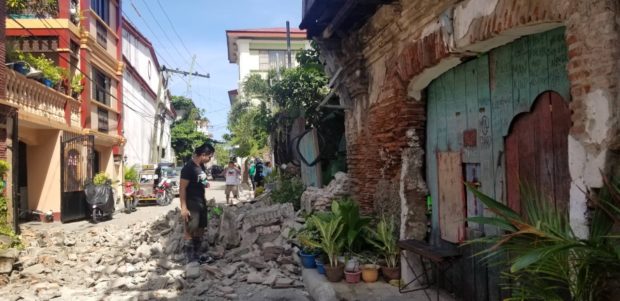
Extent of the earthquake damage in Vigan City. (Photos by local tour guide Arlene Gajeton)
MANILA, Philippines — There were 280 aftershocks reported after the magnitude 7.0 earthquake in Abra on Wednesday, the Philippine Institute of Volcanology and Seismology (Phivolcs) reported.
In an advisory, Phivolcs said of the total number of recorded aftershocks, 57 were plotted or recorded, while 13 were felt.
The magnitude range of aftershocks is from 1.5 to 5.4, according to Phivolcs.
In a primer released on Wednesday, the state seismologist said minor to moderate aftershocks are expected to occur in the epicentral area of the earthquake but occurrences of strong aftershocks could not be ruled out.
“These may continue for several days to weeks, some of which may be felt,” Phivolcs said.
Five people have died after the tremor hit northeast of Langilang, Abra, at 8:43 a.m, according to National Disaster Risk Reduction and Management Council (NDRRMC).
The state seismologists also pointed out that the last largest earthquake of magnitude 5.6 with an epicenter in Abra Province occurred in Bangued, Abra, on September 12, 1877.
Reportedly, the buildings in the area had experienced some damages.
In September 1862, a magnitude 6.2 earthquake also occurred in Ilocos Norte, which damaged buildings in various towns, especially in Piddig, Ilocos Norte.
Phivolcs said Northwestern Luzon is one of the seismically active regions in the country due to the presence of active faults that include the northern segments of the Philippine Fault, Abra River Fault, West Ilocos Fault System, and Naglibacan Fault.